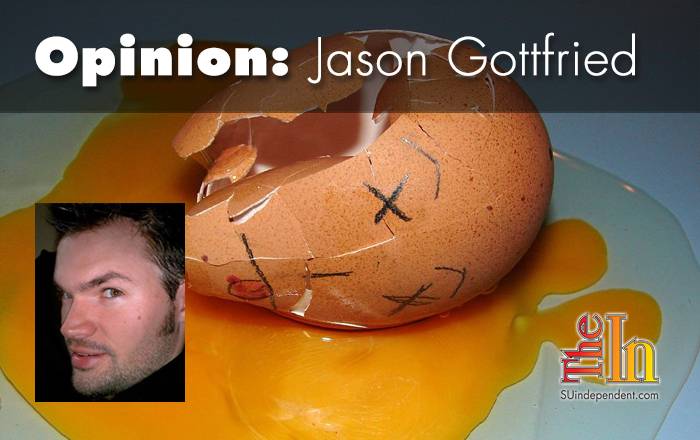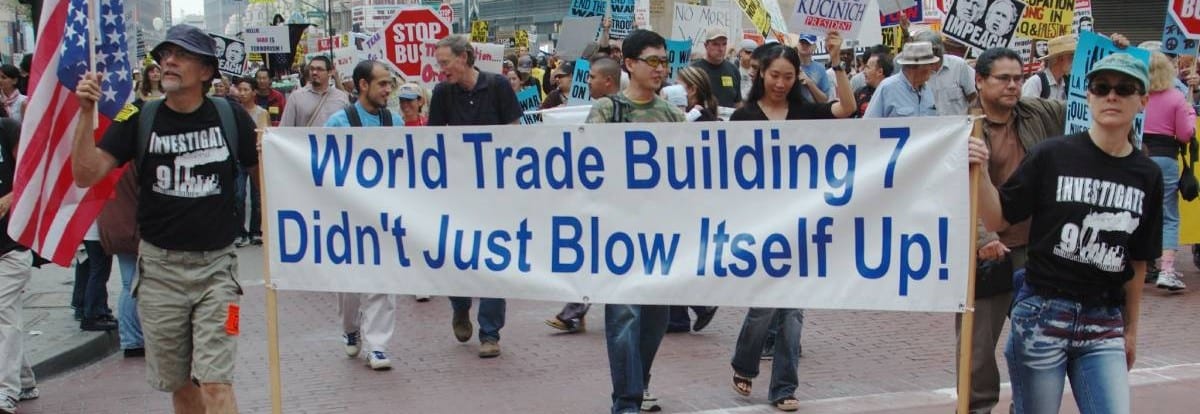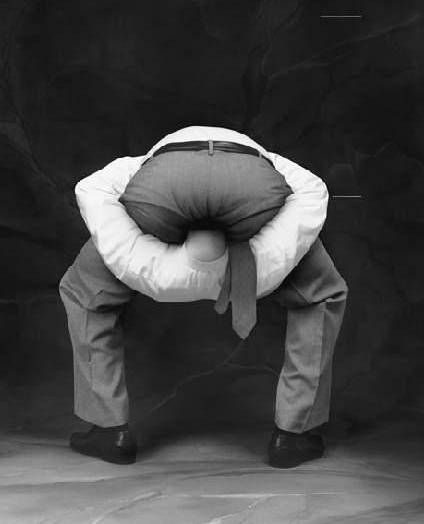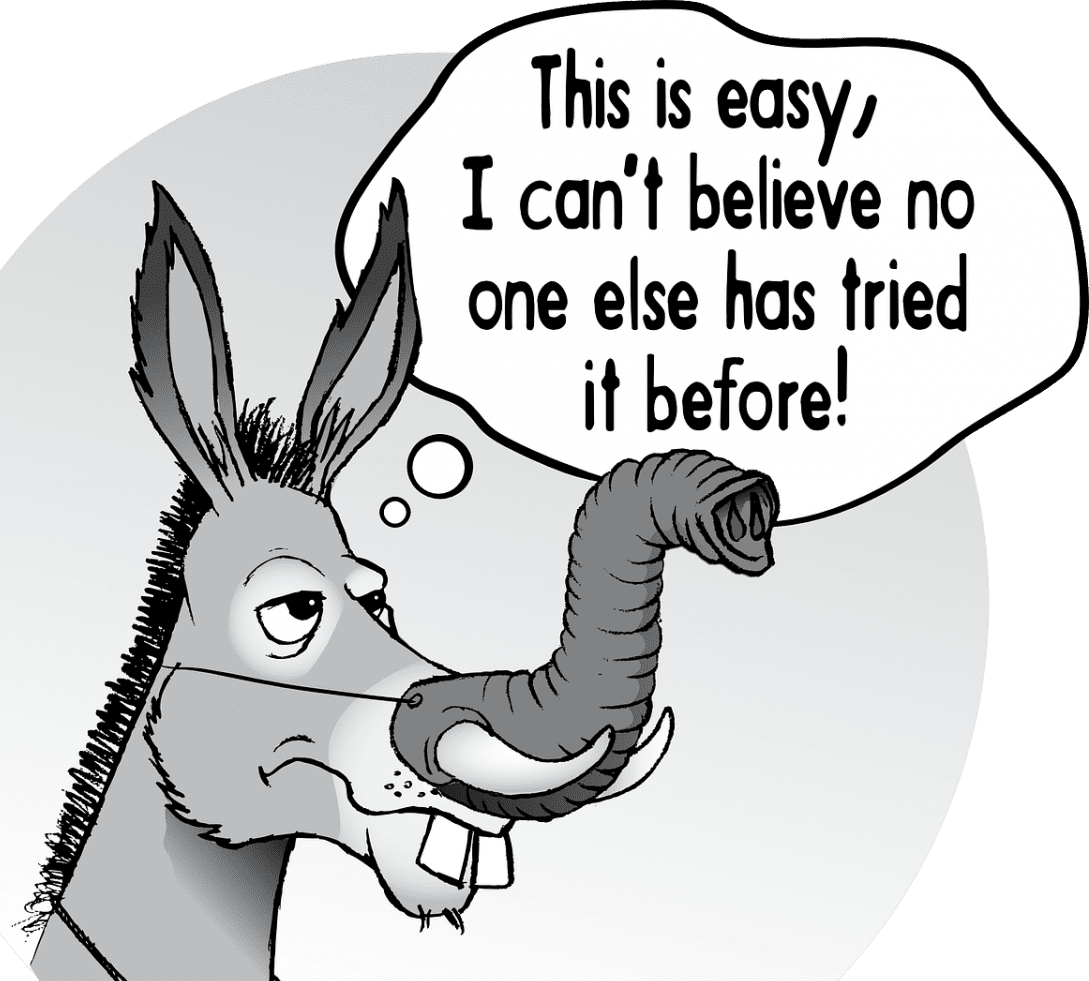 I try not to read the news too frequently, because I know that it’s never the real story. There’s no such thing as the “real story.” Even if what you are reading is a completely unbiased account of someone’s experiences and perspective, it’s still not the truth. It’s just a story, and when it comes to political issues, the plot line is usually dictated by the same tired two-party dynamic.
I try not to read the news too frequently, because I know that it’s never the real story. There’s no such thing as the “real story.” Even if what you are reading is a completely unbiased account of someone’s experiences and perspective, it’s still not the truth. It’s just a story, and when it comes to political issues, the plot line is usually dictated by the same tired two-party dynamic.

When I want the truth — well, when I really want the truth — I just sit still for 25 minutes and follow my breath, and voila! There it is. But when I am looking for the “truth” in the news, I try to visit a few news sources and then find the same material on alternative media to see what they are saying. I know that the mainstream sources are bought and paid for and will only say certain things — and there are certain things they will never say, true or not. And I know that alternative media have no strings attached financially but can also sometimes be biased by their own leanings or emotions. Generally I tend to trust the honesty and accuracy of alternative media over the mainstream, but I certainly don’t believe every theory they produce. Call me an INTP Virgo, but I think knowledge is more useful than belief.
As a result, I often find myself agreeing with a lot of people who brand themselves as conservatives and disagreeing with liberal viewpoints. I’ve always loathed both the Democratic and Republican parties and have considered myself an independent and a centrist since my teens, but every political quiz I’ve ever taken has told me that I am a flaming, bleeding-heart liberal — probably the result of having grown up revering and trying to emulate Christ.

Imagine a horizontal line representing the political spectrum. On one end is conservatism in its various incarnations; on the other end we find the many liberal stances. Now juxtapose a vertical line over that horizontal line. At the top is a well-informed — and more importantly, a widely informed and open-minded — person, and at the bottom is a person who believes strictly what his parents and society taught him as a child and has his head firmly buried in the sand — or his ass.
This is the new paradigm that I see emerging. Well, it’s not new at all, but as voters are becoming more and more disenfranchised with our government, I see the vertical axis more heavily shaping the ideological demographics of America. Our voter base increasingly resembling less a horizontal disc and more a blob or a sphere upon that axis. That shape’s fluctuations seem to be less and less influenced by two-party dynamics. And I think that’s a very good thing.
I see some conservatives who seem unencumbered by some of the mental shackles stereotypical of them, and we see eye to eye on enough issues that I am sometimes surprised to find that they identify as conservative. And I see liberals so ignorant of reality and so stuck in the self-righteousness of their own values and perspectives that I am taken aback to find that they identify as liberal. They seem just as dumb to me as the stereotypical conservative.
I guess that’s what I mean when I say that the two-party dynamic no longer applies. Despite what the media portrays, I just don’t see as much of the red vs. blue anymore. Not in real life. The myriad opposing viewpoints are spreading out to create a circle, a web.
The 2016 presidential election is a poor stage on which to illustrate this, as I see just about every conservative and liberal candidate as stunningly inept and decidedly unqualified to do anything but inflate balloons. On the Republican side … well, I’ll just leave it to Clay Jones to continue to illustrate what an unsalvageable wreckage that is. On the Democratic side, we’ve basically got Hillary Clinton, who has transparently had her eye on the presidency for decades, and Bernie Sanders, whose domestic ideas are ok — if perhaps idealistic — but whose foreign policy approach is still questionable.

CC BY 2.0
As a feminist, I’d love to see a female president as long as she were the most qualified for the job, I know that neither Cynthia McKinney nor Jill Stein would’ve continued our downward spiral the way Barack Obama has, but Clinton? Frankly, Sanders embodies more of the typical feminine values that would impel me to vote for a woman than Clinton does. I sometimes wonder if Miley Cyrus is Hillary Clinton’s psychological id personified. Hillary is part of the old Bush/Clinton regime. She’s a dabbler in international drug crime, an advocate of the destruction of our food supply, a liar, and a murderer. Just for starters. Her various stances shift like the wind. I get a lot of aghast looks from liberals when I express how intensely I distrust her.
From options like the Green Party, The Constitution Party, the Libertarian Party, the Freedom Party, the Populist Party, the Justice Party, the Objectivist Party, the Pirate Party — hell, there’s even a Marijuana Party (I wonder how they get anything done) — there is a wide spectrum of political thought available to our rainbow of citizenry. Seeing as America has long branded itself as a cultural melting pot, one would think that our political culture would be similarly kaleidoscopic.
But it’s not. Or at least it doesn’t vote as if it is. Mostly out of fear, voters pick a rich asshole with a red tie or a rich asshole with a blue tie every year. The two-party dynamic is so pervasive that people think it’s gonna be one or the other: pick your poison.
 And that’s the way both the Democratic and Republican Parties like it. They are both corrupt beyond description and so beholden to their own corporate, foreign, and financial interests –sometimes the same ones — as to essentially be betrayers of the American people. They have no reason to encourage real political action. They want the political landscape to remain a tug of war rather than a true competition. A tug of war is easy to win: you just pull harder than your opponent. A competition requires flexibility, innovation, and intelligence to win — not just brute strength.
And that’s the way both the Democratic and Republican Parties like it. They are both corrupt beyond description and so beholden to their own corporate, foreign, and financial interests –sometimes the same ones — as to essentially be betrayers of the American people. They have no reason to encourage real political action. They want the political landscape to remain a tug of war rather than a true competition. A tug of war is easy to win: you just pull harder than your opponent. A competition requires flexibility, innovation, and intelligence to win — not just brute strength.
This is why people don’t vote. (Well, that and the whole electoral college thing, which alone renders voting pointless.) Voter turnout is consistently pathetic. Republican and Democratic proponents urge nonvoters to participate, knowing that the prevailing mindset is fatalistic and that most people are resigned to the two-party dynamic, whether they like it or not.
The percentage of the population that don’t vote are clearly not on board with either mainstream party. And as the media reinforce the illusion of a two-party dynamic, these people see no point in wasting their time to throw one vote to the wind.
I wish I had some rallying cry to bolster the people to get out and explore other political options, but I don’t. I believe in grassroots approaches to everything. If you don’t like what you see, you can change things around you very easily, but you can’t so easily reprogram the public mind. And the public mind is programmed by the media — or in the case of much (most?) of Utah, the LDS Church — and both the media and the Church are subject to and dictated by the same two-party dynamic that needs dismantling.
And if you think that casting a vote instead of taking direct action will ever work … dream on. Jesus didn’t vote. He used his hands, his feet, his brain, and his heart, and that dude got shit done.
 In my 36 years, I have never seen a candidate worth voting for who stood a chance of being elected. Thanks in part to the insistence of our two-party dynamic, we enjoy a hologram of democracy. Those who have voted are the ones who have put the demons who are ruining our children’s world in charge; they are the ones who are feeding the monster of the two-party dynamic, keeping it alive. The voter base is just as much to blame as anyone for their complacency, their gleeful stupidity, and their arrogance. I’d say that education is the key, but the Internet has been right there for decades.
In my 36 years, I have never seen a candidate worth voting for who stood a chance of being elected. Thanks in part to the insistence of our two-party dynamic, we enjoy a hologram of democracy. Those who have voted are the ones who have put the demons who are ruining our children’s world in charge; they are the ones who are feeding the monster of the two-party dynamic, keeping it alive. The voter base is just as much to blame as anyone for their complacency, their gleeful stupidity, and their arrogance. I’d say that education is the key, but the Internet has been right there for decades.
I’ve been waiting for this country to collapse Rome-style since I was in high school. It’s nice to see that it hasn’t happened yet. But the ridiculous bipartisan soap opera that has been and is still being enacted is well past its 200th season. And I’m not watching it.
I’ll read a book instead.




Under National Popular Vote, every voter, everywhere, would be politically relevant and equal in every presidential election. Every vote would matter in the state counts and national count.
National Popular Vote would give a voice to the minority party voters in presidential elections in each state. Now they don’t matter to their candidate.
And now votes, beyond the one needed to get the most votes in the state, for winning in a state, are wasted and don’t matter to candidates.
Utah (5 electoral votes) alone generated a margin of 385,000 “wasted” votes for Bush in 2004.
Oklahoma (7 electoral votes) alone generated a margin of 455,000 “wasted” votes for Bush in 2004 — larger than the margin generated by the 9th and 10th largest states, namely New Jersey and North Carolina (each with 15 electoral votes).
8 small western states, with less than a third of California’s population, provided Bush with a bigger margin (1,283,076) than California provided Kerry (1,235,659).
In 2008, voter turnout in the then 15 battleground states averaged seven points higher than in the 35 non-battleground states.
In 2012, voter turnout was 11% higher in the then 9 battleground states than in the remainder of the country.
In the 2012 presidential election, 1.3 million votes decided the winner in the ten states with the closest margins of victory. But nearly 20 million eligible citizens in those states—Colorado, Florida, Iowa, Nevada, New Hampshire, North Carolina, Ohio, Pennsylvania, Virginia, and Wisconsin—are missing from the voter rolls.
Overall, these “missing voters” amount to half, and in some cases more than half, of the total votes cast for president in these states.
Analysts already conclude that only the 2016 party winner of Florida, Ohio, Virginia, Nevada, Colorado, Iowa and New Hampshire (with 86 electoral votes among them) is not a foregone conclusion. So, if the National Popular Vote bill is not in effect, less than a handful of states will continue to dominate and determine the presidential general election.
With National Popular Vote, presidential campaigns would poll, organize, visit, and appeal to more than 7 states. One would reasonably expect that voter turnout would rise in 80%+ of the country, like Utah, that is currently conceded months in advance by the minority parties in the states, taken for granted by the dominant party in the states, and ignored by all parties in presidential campaigns.
A survey of Utah voters showed 70% overall support for the idea that the President should be the candidate who receives the most popular votes in all 50 states.
The National Popular Vote bill would guarantee the presidency to the candidate who receives the most popular votes in the country.
Every vote, everywhere, would be politically relevant and equal in every presidential election. No more distorting and divisive red and blue state maps of pre-determined outcomes. There would no longer be a handful of ‘battleground’ states where voters and policies are more important than those of the voters in 80%+ of the states, like Utah, that have just been ‘spectators’ and ignored after the conventions.
The National Popular Vote bill would take effect when enacted by states possessing a majority of the electoral votes—270 of 538.
All of the presidential electors from the enacting states will be supporters of the presidential candidate receiving the most popular votes in all 50 states (and DC)—thereby guaranteeing that candidate with an Electoral College majority.
The bill has passed 33 state legislative chambers in 22 rural, small, medium, large, red, blue, and purple states with 250 electoral votes. The bill has been enacted by 11 jurisdictions with 165 electoral votes – 61% of the 270 necessary to go into effect.
NationalPopularVote